#Achille Murat
Text
I tried to look up with whom Caroline Bonaparte had affairs and I found this website through my research and I don't know how to feel about this because these comments are not detailed and objective enough for me EVEN THOUGH there are sources mentioned at the end. With all of this in mind, I wanted to ask you all if you know more about these points and if you can confirm to have read about these incidents:
Let's look at some points which let me be confused, shall we?
1. Did Lannes and Caroline ever have a relationship/situationship?
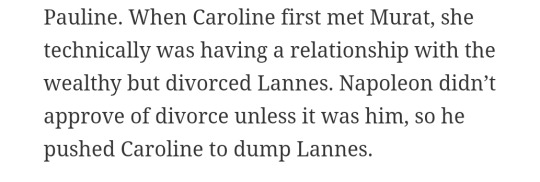
I was more confused than informed after reading these two sentences. Specifically the "unless it was him" part because I read it as if Napoleon made an exception for Lannes which he didn't? The structure of the sentence doesn't make any sense for me. At the same time, English is my third languages. Maybe I just need to read through my grammar books again and study... All of this aside, did they really have something going on?
2. Naps slapping Achille

I heard about the incident of Naps pulling at Achille's ear once but just randomely mentioning this was ???? And the thing is, this wasn't elaborated at all. When did this happen? How did this happen? How did Murat and Caroline react? I can imagine Murat getting quite protective. This incident is described as the Bonapartes disputing about something and then Napoleon slapping his nephew out of nowhere. And that's it...
3. Was Caroline really "thrilled" about the idea of staying Queen?

Pls, let me explain: I am aware of Caroline's ambitions but the verb "thrilled" sounds wrong in my eyes because, as far as I am concerned, it contains the fact that Joachim, the father of her four children, would be dead. She sounds like as if Murat didn't mean anything to her and... that wasn't the case, was it? I am open for corrections. I really want to learn.
4. This... just isn't true.

If I remember corectly, Murat's and Napoleon's relationship wasn't the best already (before Russia) because Murat wanted to reign in Naples and not to be a puppet of Napoleon.
Caroline and Murat themselves went through big highs and very big lows in 1810... i. e., Caroline went through a miscarriage.
5. Murat's indecisiveness considering leaving Napoleon's side after everything..

Gahwd, whoever wrote this, your choice of words is terrible. He wasn't an idiot. He was humane. . _.
6. Did all of the siblings really blame Caroline for everything that happened to Naps? As if they weren't done with his bullshit too... you can't tell me that Joseph wasn't just done after the peninsular war.

Why on earth would Napoleon blame Caroline for Russia? She wasn't there? In addition to that, Naps was a realist who liked to take risks and had ambitions. He is not delusional... 😭🤡
In conclusion: I am confusion.
#I am confusion#napoleon bonaparte#napoleon's marshals#joachim murat#napoleonic era#caroline murat#napoleon's family#jean lannes#Achille Murat
66 notes
·
View notes
Photo
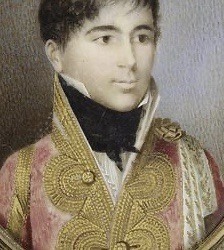
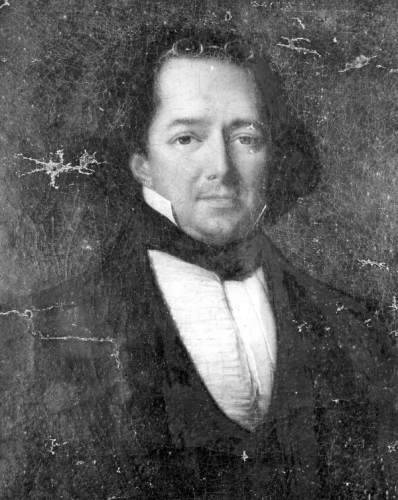
Charles Louis Napoleon Achille Murat was born on January 21, 1801 in Paris. He was the eldest child of Napoleon’s sister Caroline Bonaparte and her husband Joachim Murat. After growing up as the Crown Prince of Naples, Achille moved to Florida and became an eccentric pioneer known as the “Prince of Tallahassee.” He was independent-minded, restless and adventuresome, always seeking an elusive fortune. Though Achille claimed to be a democrat, he remained at heart an aristocrat, pining for his family’s lost throne and inherited wealth. For details, see “Achille Murat, the Prince of Tallahassee.”
33 notes
·
View notes
Text
Obligatory Papa Murat content for Father’s Day.
***
One could hardly believe how happy my Father, especially, was in the midst of his children. When the reunion occurred at his place, he let us turn everything upside-down; everything served as our toys. The box containing the objects of the Freemasonry was particularly sought after by us: the little gavel, the embroidered apron enchanted us, but nevertheless didn’t occupy us nearly as much as the weapons he kept always gathered as trophies in the middle of his bedroom.
This magnificent trophy contained, in addition to the arms that he had borne at different periods of his military career, those which served him for the hunt and those which were dear to him as souvenirs of distant countries or of significant events in which he had taken part. He permitted us to touch them, to take them in hand, pointed out their beauty to us, and recounted to us, explained to us the origin of each of them. Quite often my brothers, while playing with the swords, pulled them out of the scabbard, and simulated fights, engaged in battles. I was the youngest, the slightest bit timid, and in this duel capacity, the punching bag for my elders; I was frightened, they attacked me, naked sword in hand; I became upset, I cried and ran to take refuge in the arms of my Father who, with a word, halted the assailants and, while scolding me kindly, sought to console me and to cure me of my childish frights. Poor Father! These familial scenes where he showed himself so good, so tender to us, are the last memories I conserve of him! These arms are, more or less, the only objects belonging to him that we have been able to save! I possess a portion of them which I consider to be the most precious things I have. Every time that I look at them, they recall to me, aside from the glory of my Father, the happy years of my childhood spent with him.
***
—Louise Murat-Rasponi, Souvenirs d’enfance d’une fille de Joachim Murat.
26 notes
·
View notes
Text

Henry ‘Chips’ Channon: The Diaries (Vol. 1), 1918-38, entry for 19th January 1923
—
Friday 19th January
A ball this evening in the great barons’ hall to which all of the county came including large parties from Petworth¹ and Albury² …. At four I went to bed and was lulled to sleep by the noise of the jazz and the dancing. We were over seventy at dinner and assembled in the dull Gothic library-gallery and processed in state into the dining room. The castle itself is quite bare of interesting furniture and tapestry and only a few mediocre pictures. I am almost the only ‘prot’³ and little bells tinkle continuously to call the faithful to Mass. I feel an outrageous heretic, even the servants disapprove of one. Our ‘Premier Duke’ is a nice lad of 14 called ‘Bernard’.⁴ He is shy but will form well. I find the mother more interesting than the daughter.
Achille Murat⁵ is engaged to be married to Mlle Chasseloup-Laubat.⁶ It sounds très noblesse de province⁷ but I may be wrong. What a gentle charmer Achille used to be. He would come to me always from the train when he arrived on permission … back in those happy 1918 days … when dirty, simple, young and unformed, he was a perfect companion for two or three days. We would go to plays and go dancing together and sometimes take his mother the Princesse Marie⁸ to dine with us. He had a deep sense of humour and yet was completely unselfconscious, almost as much as Ivo Grenfell.⁹ He was liked in his regiment and at last promoted to the dignity of maréchal du logis.¹⁰ It makes me sad this flight of time, and I realise so poignantly in flashes sometimes how much I have thrown away in abandoning my French life. Had I never known England and its rarer, richer charm of life I should have been happy there ….
—
1. Petworth House in Sussex, seat of Lord Leconfield.
2. Albury Park in Surrey, a property of the Duke of Northumberland.
3. Protestant. The Howards of Arundel were, and still are, one of the leading Roman Catholic families in England.
4. Bernard Marmaduke Fitzalan-Howard, 16th Duke of Norfolk (1908–75), Premier Duke in the peerage of England and Hereditary Earl Marshal; he succeeded his father when he was only 9. He arranged the 1937 and 1953 coronations, and the state funeral of Sir Winston Churchill.
5. Achille Alain Joachim Napoleon Murat (1898–1987), nephew by marriage of Princesse Eugène Murat, who had befriended Channon in Paris.
6. Madeleine Marie Louise Chasseloup-Laubat (1901–45).
7. ‘Very provincial nobility’, in other words not quite faubourg.
8. Marie de Rohan-Chabot (1876–1951), wife of Lucien Murat (1870–1933).
9. Ivo George Grenfell (1898–1926), son of the 1st Baron Desborough; killed in a car crash. His two brothers Julian (1888–1915) and Gerald (1890–1915) were killed in the Great War. In a letter of November 1920 to his father Channon describes Grenfell as ‘my best friend in Oxford … he is as big as a great Greek god and looks like a Viking’.
10. A sergeant.
#chips channon#channon diaries#1923#bernard norfolk#gwendoline norfolk#rachel howard#achille murat#madeleine murat#marie murat#ivo grenfell#arundel castle#petworth house#albury park#🕰️
0 notes
Text
Reading about Bonapartists that fled to the United States is fun because you'll come across crazy stories like how Joachim Murat's son came over and became a stinky, feral, Florida Man (who, of course, was also a lawyer).
1 note
·
View note
Text
VOTE FOR A MARSHAL OF THE EMPIRE!!!
SINCE WERE NOT GOING TO APPEAR FOR AGES IN THAT OFFICIAL TOURNAMENT AND THE EMPEROR JUST GOT ROYALLED FUCKED THERE BY A VANISHED ROAST BEEF
HERES A BALLOT JUST FOR US MARSHALS OF THE EMPIRE!!
IN CASE YOU DONT KNOW WHO WE ARE WE'RE THE TOP MILITARY COMMANDERS PROMOTED BY NAPOLEON HIMSELF
AND WE HAVE REALLY BIG HATS
VOTE FOR WHOEEVER THE FUCK YOU WANT WHETHER THATS THE BEST OR THE SEXIEST OR THE MOST PATHETIC I DONT CARE
YOU KNOW YOU WANT TO VOTE FOR ME THOUGH!!!
GO AHEAD AND POST ALL THE PROPAGRANDA YOU WANT, THE ADC WILL SHARE IT IF ITS FUNNY
SORRY TO MONCEY, JOURDAN, BERNADOTTE, BRUNE, MORTIER, KELLERMAN, PERIGNON, SERURIER, VICTOR, MACDONALD, OUDINOT, MARMONT, SUCHET, SAINT-CYR AND GROUCHY, MAYBE WELL HAVE A PITY POLLE LATER
84 notes
·
View notes
Text
Inspired by the rambling I did on @impetuous-impulse ‘s posts I had an inkling of a marshalate fic idea that I probably won’t write because it has a bit of conceptual overlap with Night At The Marshalate and I need to poke that
But basically some kind of surreal dreamlike fic where Napoleon and the marshals are in a strange fairytale afterlife where their personas and appearances are shaped by their legacies and historical viewpoints, and the disconnect between that and how they remember themselves to be and yeah that’s another layer of inaccurate interpretation via me but we need to cut off that infinite regression
But also, and historical RPF shippingness ahead:
Napoleon would be grandiose, short, a towering conqueror, statuesque and beautiful but also monstrous and hungry
And you contrast this with Lannes who was struck down in his prime as the Roland or Achilles of the Grande Armee, a knight-hero beloved and flattened into bravery and tragedy
But even if Napoleon is an ogre or a tyrant or a beast or a mythologised marble statue, this knight-hero Lannes will follow him loyally even into the night
(And then you have Roi Nicolas Soult characterised by a slanderous tortured ambition, holding a crowned laughing mask over his scowling face
Fiery Ney burning forever in defiance, and how he haunts those who outlived him, a veritable Marley in chains of bravery and honour-
Haunting the “little drummer boy” Victor of the sunny face and guilty mind
Scintillating Murat who has been characterised as a foppish idiot who didn’t know what to do with power, looking into cracked mirrors
I could keep going on but look weird dreamlike fairytales is a genre I enjoy way too much)
And yes this is also inspired by fgo napoleon I think Murat is peak Rider and Lannes is peak Saber
41 notes
·
View notes
Photo










SAYING YOUR NAME LIKE FIRST SUMMER RAIN LIKE SUNSET ORANGE
— vice versa (2022) ⪢ episode seven
richie norton || carl r. rogers || kiera cass, the heir || haruki murakami, 1Q84 || andrea gibson, photograph || taylor swift, afterglow || anne sexton, a self-portrait in letters || mehmet murat ildan || madeline miller, the song of achilles || taylor jenkins reid, the seven husbands of evelyn hugo || fernando pessoa, the book of disquiet || @wholesome-suggestion
#vice versa#vice versa the series#viceversaedit#web weaving#jimmy jitaraphol#sea tawinan#haruki murakami#mine: edits#samblr#userjaehwany#epiphanjins#mostlyfate#todramaism#lextag#userchlo#tuserjackie#userhanjiwoos#tosnimeat#ninisdarlings#userconcrete#userbillkin#vishingwell#mjtag#tonanons#usernuria#userkit#hipranparakul#i honestly dk what the spiral edit is but its a mood rn#see ya on thurs
130 notes
·
View notes
Text
I was tagged by @cadmusfly for this little ask game. It’s like 4AM in the morning here, but I can’t sleep, so this may go sideways. 😅
Last Song: Eternal Flame by Atom Music Radio
These lyrics can be generically heroic but my brain has insisted on applying it to dead heroic Frenchmen.
This flame we carry into battle
A fading memory
This light will conquer the darkness
Shining bright for all to see
We will be legendary
And from this moment on
We will not be forgotten
Our flame burns on and on
We′ll fight for all the glory, and hope that burns in all
And from the dark of the ashes, we will rise up and stand tall
Etc.
Currently Watching: Literally nothing except the dark void of my bedroom. More like, I should be watching the newest episodes of the Quantum Leap reboot and the new season of Halo. I’ll get to it eventually when my attention span returns from the war.
The last thing I watched was some reaction videos to The Expanse from Warp Reactor on YouTube. He’s got some great takes and he genuinely loves sci fi, and it amuses me endlessly. He’s going to be reacting to S1E04 soon, and it’s always fun to see how people new to the show react to that scene.
(If you've seen The Expanse, you know exactly what I mean.)
Three ships:
I’m a multishipper, so I have lots of ships in my head. At this hour of night, there’s these:
I love the sweetness of childhood friends to lovers in Murat/Bessières. There’s the angst and dysfunction potential it has towards their later years but they try anyway.
TBH, Bessières/Duroc is probably more psychologically healthy than Murat/Bessières, and I’m perfectly willing to ship them too. Duroc is very sweet and he deserves love too.
Augereau/Masséna has been on my brain a lot too, lately. These two guys are – at minimum – morally grey on a good day, total bastards most other days. Literal partners in crime, they’re a lot of fun to just cut loose with.
There’s other ships in my head, like Booker and Nile from The Old Guard, and some OC ships in Star Trek I’d actually love to write about some day.
Favorite Color: I’m an old trad goth, so black has been a staple color for me for a very long time. But lately, as I get older, I’ve been finding that I’m – gasp – getting tired of black. I’ve been accumulating more and more accessories in pink.
Currently Consuming: Last thing eaten was some focaccia bread.
First Ship: OC/Pike from ElfQuest. It was a really long time ago and I don’t remember much about that one. The next one I remember clearly was Achilles/Patroclus. I shipped them before it was cool.
Relationship Status: I’m in a steady relationship with my cockatiel. Lately he has been trying to destroy me for getting too close to “his” nest, which is also my closet.
Last Movie: Austerlitz (1960), but I made it ⅓ of the way through before my stream crapped out on me. I’ll give it a try again later.
Currently Working On… this thing I last touched.

Tagging @scribblerinthestars, @sindirimba, @gaal-dornick, @flowwochair, @the-orion-scribe, and a whole bunch of other people whose names escape me because I should be sleeping.
3 notes
·
View notes
Photo

Catherine Daingerfield Willis Gray Murat (August 17, 1803 – August 6, 1867) was an American socialite and preservationist. In 1858, she was appointed the first vice regent for Florida by the Mount Vernon Ladies' Association. Together with Ellen Call Long, she raised significant funds for the acquisition and restoration of Mount Vernon. Catherine Murat was the great-grandniece of George Washington and was married to the former Prince Achille Murat.
20 notes
·
View notes
Text
Museums in Georgia offer a Cultural Exploration: Visit 7 Must-See Exhibits

Explore Georgia's rich history through its diverse museums on our exclusive Georgia tour packages 2023. Discover archaeological treasures, sacred artifacts, and artistic masterpieces spanning over 1,000 years. The National Museum of Georgia, the largest in the country, houses an extensive collection, including Urartian inscriptions, hominid bones, ceramics, ancient icons, handicrafts, and historical clothing. Explore these remarkable exhibits not only in Tbilisi but also in various display buildings. Additionally, delve into comprehensive collections of zoology, anthropology, and geology, enhancing your immersive journey through Georgia's cultural tapestry. Join us for an unforgettable exploration of Georgia's fascinating heritage in 2023.
Georgia also has a large number of local exhibition centers and art galleries where exhibitions from diverse collections are frequently opened. The majority of art galleries are private, although this does not stop them from exhibiting the best Georgian masterworks from previous centuries. Please be aware that practically all museums in Georgia close at 18 o'clock on Mondays (and even earlier in the winter).
Museum of Georgia
The Museum of Georgia, a section of the National Museum of Georgia, is situated on Shota Rustaveli Avenue in the heart of Tbilisi. Taxis and public transportation are both simple ways to get to the Museum. The Museum in Tbilisi is home to an exceptional collection of ancient artifacts from all around the world, including items from the third century. A permanent exhibit about the Caucasus' natural history is available to visitors to the Millennium BC.
Soviet Occupation Museum
The Georgian History Museum houses the Soviet Occupation Museum, which depicts the 70 years of Soviet authority in Georgia, starting in 1921 and ending with its fall in 1991. Along with other artifacts depicting Georgia's social and political tyranny during the Soviet era, you can view the personal files of "rebellious" prominent personalities in Georgia as well as preparations to have them executed or exiled. One of the train cars where the 1924 national revolutionaries were executed is also housed in the hall.
National Gallery, Tbilisi
The National Gallery is one of the amazing places to visit in Georgia if you love art and want to see Georgian painters' greatest works. The structure was constructed in response to the Russian tsar's 1888 plan to establish a military and historical museum to highlight the superiority of the Russian Empire inside its borders. The works of Georgian artists from the 18th and 19th centuries, such as Niko Pirosmani, Lado Gudiashvili, David Kakabadze, and the sculptor Iakob Nikoladze, are currently on display in the museum's permanent collection.
Dadiani Palace Museum
In addition to these objects, the museum boasts a beautiful library with books from Napoleon's personal library, furniture in the French and Russian styles, and personal gifts from British, Russian, and foreign nobles to the Dadiani family. Dadiani Palace in Zugdidi, Samegrelo region, is home to more notable remnants of both Georgian and European culture. Over 45,000 pieces, some of which were part of the Dadiani family collection, may be found at the museum. The death mask of Napoleon Bonaparte and the robe thought to have been worn by the Virgin Mary are two of the most important treasures on display here. Salome Diadiani Murat, the spouse of Napoleon's nephew Achille, brought the mask to Georgia.
Sighnaghi Museum
Georgia's most renowned wine-producing region is Akheti. The best tourist spot that must be seen practically all year round is this one. Home to a number of museums in Kakheti, but one is unquestionably worthwhile. This is the Sighnaghi Museum, which is situated in the romantic city of Sighnaghi. Five thousand ethnographic relics, including textiles, copper and wooden household goods, agricultural tools, winemaking supplies, jewelry, and musical instruments, are on display at the Sighnaghi Museum. You may also see the extensive numismatic collection of around 2000 coins, which includes old Sassanid Persian coins as well as local coinage issued by Georgian kings Erekle, Tamar, and Lasha-Giorgi. On the second floor of the museum, Niko Pirosmani's transient paintings are also on display.
Tsinandali Museum
In the Akheti district, the Tsinandali Museum is housed in the residence of Alexander Chavchavadze, a poet and aristocrat from Georgia. Various slices of furniture, works of fine and decorative art, and manuscripts from Chavchavadze's collections are on show in the museum. The house-Museum also features a beautiful nineteenth-century garden and a wine cellar that was constructed in 1835. Regional buses and taxis are two ways to get to Sighnaghi and Tsinandali. The stations are a short walk from several museums in Georgia.
Svaneti Museum and Tower of Margiani
Visitors visiting Georgia are required to climb the Svaneti Mountains. As the tsars transported their wealth to the mountains during invasions, the Samegrelo-Zemo Svaneti region served as the Keeper of the Georgian Treasury for centuries. The Svaneti Museum in Mestia, which is a division of the National Museum of Georgia, currently houses these artifacts, making it one of the most significant collections kept in Georgian institutions. With its renovated media library, modified foyer, and roof terrace (in the summer), the Svaneti Museum serves as an important regional social space in addition to exhibiting one-of-a-kind masterpieces of domestic and international decorative and applied arts.
Before continuing your ascent to Ushguli, which is thought to be the highest continuously inhabited settlement in Europe, a cup of delectable coffee at a cafe with a panoramic view of the towers of Svaneti and the summit of Tetnuldi will lift your spirits and give you new energy. Regional buses go from Zugdidi and Tbilisi to Mestia. The Mestia city center is just a short stroll from the Museum to visit during Georgia tours.
3 notes
·
View notes
Text
The napoleonic marshal‘s children
After seeing @josefavomjaaga’s and @northernmariette’s marshal calendar, I wanted to do a similar thing for all the marshal’s children! So I did! I hope you like it. c:
I listed them in more or less chronological order but categorised them in years (especially because we don‘t know all their birthdays).
At the end of this post you are going to find remarks about some of the marshals because not every child is listed! ^^“
To the question about the sources: I mostly googled it and searched their dates in Wikipedia, ahaha. Nevertheless, I also found this website. However, I would be careful with it. We are talking about history and different sources can have different dates.
I am always open for corrections. Just correct me in the comments if you find or know a trustful source which would show that one or some of the dates are incorrect.
At the end of the day it is harmless fun and research. :)
Pre 1790
François Étienne Kellermann (4 August 1770- 2 June 1835)
Marguerite Cécile Kellermann (15 March 1773 - 12 August 1850)
Ernestine Grouchy (1787–1866)
Mélanie Marie Josèphe de Pérignon (1788 - 1858)
Alphonse Grouchy (1789–1864)
Jean-Baptiste Sophie Pierre de Pérignon (1789- 14 January 1807)
Marie Françoise Germaine de Pérignon (1789 - 15 May 1844)
Angélique Catherine Jourdan (1789 or 1791 - 7 March 1879)
1790 - 1791
Marie-Louise Oudinot (1790–1832)
Marie-Anne Masséna (8 July 1790 - 1794)
Charles Oudinot (1791 - 1863)
Aimee-Clementine Grouchy (1791–1826)
Anne-Francoise Moncey (1791–1842)
1792 - 1793
Bon-Louis Moncey (1792–1817)
Victorine Perrin (1792–1822)
Anne-Charlotte Macdonald (1792–1870)
François Henri de Pérignon (23 February 1793 - 19 October 1841)
Jacques Prosper Masséna (25 June 1793 - 13 May 1821)
1794 - 1795
Victoire Thècle Masséna (28 September 1794 - 18 March 1857)
Adele-Elisabeth Macdonald (1794–1822)
Marguerite-Félécité Desprez (1795-1854); adopted by Sérurier
Nicolette Oudinot (1795–1865)
Charles Perrin (1795–15 March 1827)
1796 - 1997
Emilie Oudinot (1796–1805)
Victor Grouchy (1796–1864)
Napoleon-Victor Perrin (24 October 1796 - 2 December 1853)
Jeanne Madeleine Delphine Jourdan (1797-1839)
1799
François Victor Masséna (2 April 1799 - 16 April 1863)
Joseph François Oscar Bernadotte (4 July 1799 – 8 July 1859)
Auguste Oudinot (1799–1835)
Caroline de Pérignon (1799-1819)
Eugene Perrin (1799–1852)
1800
Nina Jourdan (1800-1833)
Caroline Mortier de Trevise (1800–1842)
1801
Achille Charles Louis Napoléon Murat (21 January 1801 - 15 April 1847)
Louis Napoléon Lannes (30 July 1801 – 19 July 1874)
Elise Oudinot (1801–1882)
1802
Marie Letizia Joséphine Annonciade Murat (26 April 1802 - 12 March 1859)
Alfred-Jean Lannes (11 July 1802 – 20 June 1861)
Napoléon Bessière (2 August 1802 - 21 July 1856)
Paul Davout (1802–1803)
Napoléon Soult (1802–1857)
1803
Marie-Agnès Irma de Pérignon (5 April 1803 - 16 December 1849)
Joseph Napoléon Ney (8 May 1803 – 25 July 1857)
Lucien Charles Joseph Napoléon Murat (16 May 1803 - 10 April 1878)
Jean-Ernest Lannes (20 July 1803 – 24 November 1882)
Alexandrine-Aimee Macdonald (1803–1869)
Sophie Malvina Joséphine Mortier de Trévise ( 1803 - ???)
1804
Napoléon Mortier de Trévise (6 August 1804 - 29 December 1869)
Michel Louis Félix Ney (24 August 1804 – 14 July 1854)
Gustave-Olivier Lannes (4 December 1804 – 25 August 1875)
Joséphine Davout (1804–1805)
Hortense Soult (1804–1862)
Octavie de Pérignon (1804-1847)
1805
Louise Julie Caroline Murat (21 March 1805 - 1 December 1889)
Antoinette Joséphine Davout (1805 – 19 August 1821)
Stephanie-Josephine Perrin (1805–1832)
1806
Josephine-Louise Lannes (4 March 1806 – 8 November 1889)
Eugène Michel Ney (12 July 1806 – 25 October 1845)
Edouard Moriter de Trévise (1806–1815)
Léopold de Pérignon (1806-1862)
1807
Adèle Napoleone Davout (June 1807 – 21 January 1885)
Jeanne-Francoise Moncey (1807–1853)
1808: Stephanie Oudinot (1808-1893)
1809: Napoleon Davout (1809–1810)
1810: Napoleon Alexander Berthier (11 September 1810 – 10 February 1887)
1811
Napoleon Louis Davout (6 January 1811 - 13 June 1853)
Louise-Honorine Suchet (1811 – 1885)
Louise Mortier de Trévise (1811–1831)
1812
Edgar Napoléon Henry Ney (12 April 1812 – 4 October 1882)
Caroline-Joséphine Berthier (22 August 1812 – 1905)
Jules Davout (December 1812 - 1813)
1813: Louis-Napoleon Suchet (23 May 1813- 22 July 1867/77)
1814: Eve-Stéphanie Mortier de Trévise (1814–1831)
1815
Marie Anne Berthier (February 1815 - 23 July 1878)
Adelaide Louise Davout (8 July 1815 – 6 October 1892)
Laurent François or Laurent-Camille Saint-Cyr (I found two almost similar names with the same date so) (30 December 1815 – 30 January 1904)
1816: Louise Marie Oudinot (1816 - 1909)
1817
Caroline Oudinot (1817–1896)
Caroline Soult (1817–1817)
1819: Charles-Joseph Oudinot (1819–1858)
1820: Anne-Marie Suchet (1820 - 27 May 1835)
1822: Henri Oudinot ( 3 February 1822 – 29 July 1891)
1824: Louis Marie Macdonald (11 November 1824 - 6 April 1881.)
1830: Noemie Grouchy (1830–1843)
——————
Children without clear birthdays:
Camille Jourdan (died in 1842)
Sophie Jourdan (died in 1820)
Additional remarks:
- Marshal Berthier died 8.5 months before his last daughter‘s birth.
- Marshal Oudinot had 11 children and the age difference between his first and last child is around 32 years.
- The age difference between marshal Grouchy‘s first and last child is around 43 years.
- Marshal Lefebvre had fourteen children (12 sons, 2 daughters) but I couldn‘t find anything kind of reliable about them so they are not listed above. I am aware that two sons of him were listed in the link above. Nevertheless, I was uncertain to name them in my list because I thought that his last living son died in the Russian campaign while the website writes about the possibility of another son dying in 1817.
- Marshal Augerau had no children.
- Marshal Brune had apparently adopted two daughters whose names are unknown.
- Marshal Pérignon: I couldn‘t find anything about his daughters, Justine, Elisabeth and Adèle, except that they died in infancy.
- Marshal Sérurier had no biological children but adopted Marguerite-Félécité Desprez in 1814.
- Marshal Marmont had no children.
- I found out that marshal Saint-Cyr married his first cousin, lol.
- I didn‘t find anything about marshal Poniatowski having children. Apparently, he wasn‘t married either (thank you, @northernmariette for the correction of this fact! c:)
#Marshal‘s children calendar#literally every napoleonic marshal ahaha#napoleonic era#Napoleonic children#I am not putting all the children‘s names into the tags#Thank you no thank you! :)#YES I posted it without double checking every child so don‘t be surprised when I have to correct some stuff 😭#napoleon's marshals#napoleonic
66 notes
·
View notes
Text

J’aime aussi les gens qui, comme Bernanos, vont vers le surnaturel ou le mysticisme. Hector, Achille, Léon Bloy, Bahamontès et Usain Bolt, c’est un mélange de tout ça. Mais j’aime pas les lopettes, ce qui semble être la particularité du monde politique : fabricant de lopettes. Même Proust pouvait provoquer quelqu’un en duel et aller au coin du bois. Dans le monde politique d’aujourd’hui, pas un seul serait capable de le faire !
Jean-Louis Murat
5 notes
·
View notes
Text
A letter from Caroline Murat to her husband.
***
Paris, 13 May 1810
I finally received your news and needed it, because I was truly worried by your silence. You've had a cold, you've had a little fever. But M. Baudus assures me that you are perfectly recovered, that you assisted in Achille's horseback riding lesson and that you are perfectly content with him on all points. What you tell me of him and our other children overjoys me, you will see that we will be, one day, the happiest beings in the world and we will owe it to our children; they will return all the love that we give them and our old age will be embellished by their virtues. See as I see, far into the future. I believe that is the way of mothers, to live in the future of their children.
I come back now to your letter that brought me much sorrow, because I cannot know you are anxious without feeling it a hundred-fold. You need, my dear friend, to make all your efforts to take Sicily and above all not to lose a moment of time, I urge you strongly. I am quite sure that the Emperor will do justice to all your feelings for him and that he loves you well; he is quick-tempered, but he is so good for us that we must never doubt his feelings. I desire his return, and that of the Empress. Paris is very sad without them and without you.
I am bored, suffering, I cannot explain to you all I suffer from sadness, I need to find myself reunited with you, with our dear children; take good care of your health, I fear that the excessive work you speak to me of, with the great hot weather, will only hurt you; I also fear the Calabrian climate. Undoubtedly you've already left to return there and I won't receive your news so often, and I will be very worried. I pray you write to me as punctually as possible and consider that a single day's delay can give me much, very much, anxiety.
Farewell, my dear friend, believe in my tender affection. I kiss you tenderly.
Caroline
***
From Lettres Et Documents Pour Servir À l'Histoire de Joachim Murat, Vol. 8.
15 notes
·
View notes
Photo



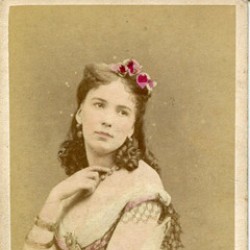

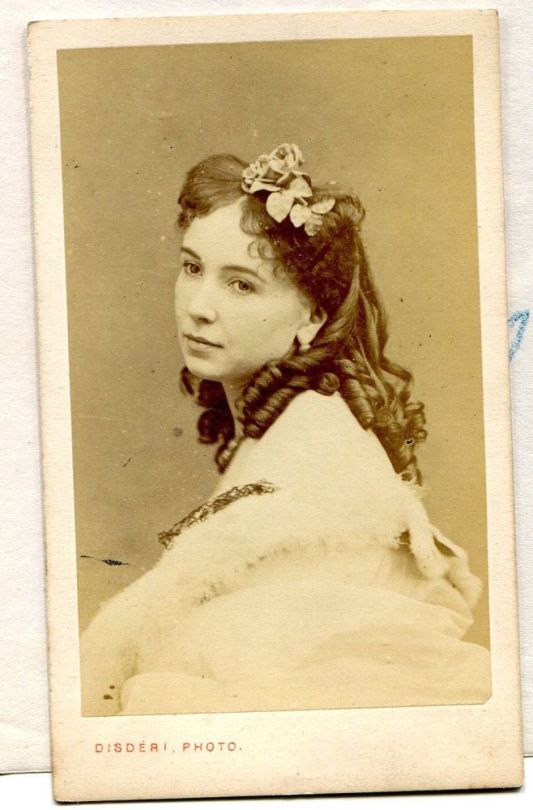


The humble English girl who became a courtesan "Cora Pearl" for the French empire.
Colourful photograph of the famous British courtesan Cora Pearl.
Cora Pearl showed up naked at Parisian dinners in the mid-1800s.
Her shocking behaviour to society as a sought-after courtesan became a symbol of the decay of the Second French Empire.
But the beauty of the "demi-monde" [comp. of demi "mezzo1" and monde "world, worldly society"]. - With reference to the sec. 19 °, the equivocal society of which women of the lower class belong, whose easy morals arouse scandal in right-thinking and upper-class circles where their ruthlessness leads them to live.] Actually descended from humble English origins.
Cora Pearl, born Emma Elizabeth Crouch in Portsmouth, England, probably around 1835, although in her memoirs she took seven years off her age, claiming a year of birth in 1842.
Her father, Frederick Nicholas Crouch, was a songwriter of some repute, who abandoned his family and moved to the United States. He would marry several times and were rumoured to have 20 children.
Emma's mother, meanwhile, began a relationship with a man Emma didn't get along with.
She and her brothers were sent to a French boarding school, where she learned the language and manners of the country.
After school, she moved with her grandmother to London and found work as a milliner's assistant, which bored her.
In a perhaps apocryphal story, young Emma was exploited by a random man she met after her job, an event that led her to the "road" of her life.
In this story, she Emma had left the lab expecting to find a mate.
Instead, she met a man who offered to buy her cakes.
The man took her to a "gin palace" where he filled her with drinks and seduced her, leaving her a £ 5 note on a bedside table which he discovered the next morning.
While history seems unlikely to us, it was not impossible in 19th century London.
It's also possible that Emma's mother's boyfriend behaved very inappropriately with the little girl.
Regardless, it was a turning point for Emma.
She felt she could not go back to her grandmother's house.She took a room in Covent Garden where she began entertaining gentlemen, one of whom, Robert Bignell, was the owner of a notorious brothel called Argyll Rooms.
She moved to Argyll and travelled several times with Bignell to Paris.
She fell in love with the City of Light, decided to stay there and changed her name to Cora Pearl.
In the mid-19th century Paris was the centre of the cultural world, a cauldron of emerging poets, artists, musicians and assorted bon vivants.
As a courtesan, Cora Pearl was a new sensation who excited her clients with her tiny waist and generous breasts.
She was fiery, exuberant, not embarrassed to express passion.
She had a series of "protectors", as they were called, starting with Victor Massena, Duke of Rivoli.
She showered her with money and gifts, bought her her first horse and financed her trips to gambling dens.
Her many influential lovers included the Prince of Orange, the heir to the throne of the Netherlands; the half-brother of Napoleon III, the Duke de Morny; and his cousin Napoleon Joseph Charles Paul, sometimes known as Prince Jerome Napoleon, with whom he has had his longest (and most profitable) relationship.
Cora Pearl and Prince Achille Murat (1865). photograph by Louis-Jean Delton.
Cora became famous for her affinity for horses.
She at one point she owned up to 60 her, along with a fleet of carriages.
She is said to have inspired the fashion for courtesans to ride a carriage in the Bois de Boulogne.
At the peak of her popularity, she had two residences in Paris and a chateau in the countryside.
Cora Pearl became one of the most famous Parisian courtesans of her era, known for her outrageously sexy demeanour.
She danced in her birthday dress in front of the guests or bathed in champagne.
She served outrageously extravagant meals, during one of which she would show up naked on a silver platter.
Her haute couture dresses and sumptuous lingerie were made by the best tailors in the country.
She wore the finest jewellery and expensive perfume.
She loved to gamble.
She also made a brief foray into the theatre, wearing little more than strategically placed diamonds, but her efforts were not serious and were not praised.
The end of an era was approaching.
The Franco-Prussian War put a stop to frivolous parties.
Cora briefly returned to England with Prince Jerome Napoleon, but she was turned away from the Grosvenor Hotel, given her reputation.
When she returned to Paris, she found that conservative austerity had taken over the once effervescent city.
Her extravagance of hers was now seen as clumsy and she had fewer wealthy people to pay her bills.
A wealthy but irregular young man 10 years her junior, Alexandre Duval, became obsessed with Cora Pearl.
She put up with him for a while, needing her money, but when he got too wild, she dumped him.
On December 19, 1872, Duval went to her home, believed to be her, with the intention of killing her.
The gun he had brought with him accidentally discharged, nearly fatally wounding him; initially close to death, he eventually recovered, although the aftermath of the event proved disastrous for Cora's reputation.
Billed as the Duval affair, the scandal prompted authorities to order Cora to leave the country, leading to her expulsion from Paris first to London and then to Monaco and Nice.
The contents of his Parisian home were then sold.
Either way, Duval fully recovered, but Cora Pearl's already fragile reputation was shattered.
By the time she reached her 40th birthday, her fortunes had plummeted.
Prince Jerome Napoleon, who had paid her bills, left her.
In the following decade, he gradually sold goods: houses, horses, jewels.
In 1885 she had nothing left and she lived in a boarding house.
Cora Pearl had literally come to the end of her life.
She published her memoir in 1886, but as he masked the names of his patrons and downplayed his vulgar exploits, he was deemed boring and quickly disappeared.
Soon after her memoirs were published, Cora fell seriously ill with intestinal cancer.
She died on July 8, 1886 with some obituaries appearing in London and Paris newspapers.
She was only 51 years old.
One of her former lovers anonymously covered the cost of his funeral and her burial.
She was buried in the Batignolles cemetery in Paris (track number 10, line 4), in a tomb rented for five years.
After those five years, what was left of her body was moved to an ossuary and her grave was reused.
5 notes
·
View notes
Text

Prince Achille Murat and Cora Pearl in 1865 by Louis-Jean Delton
0 notes